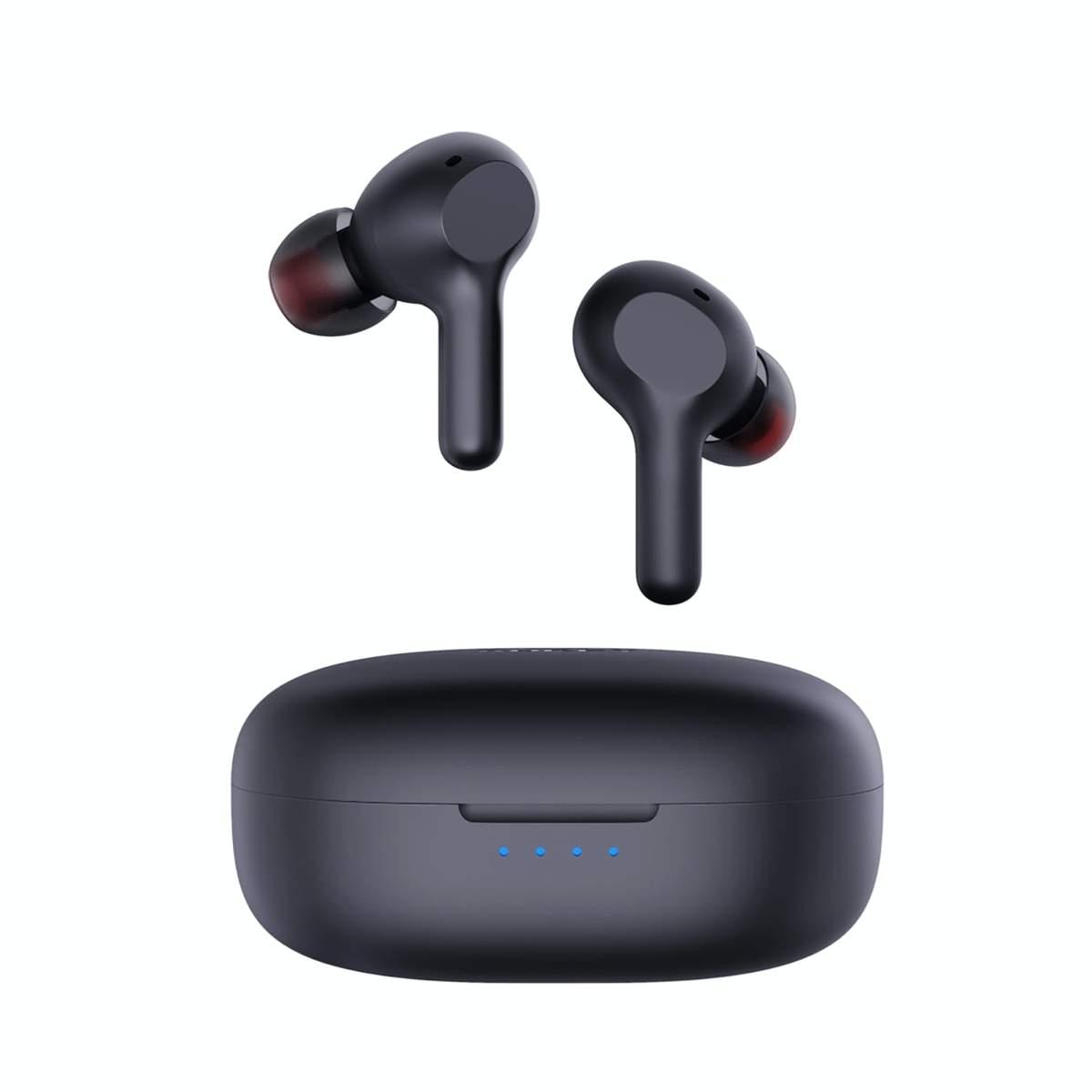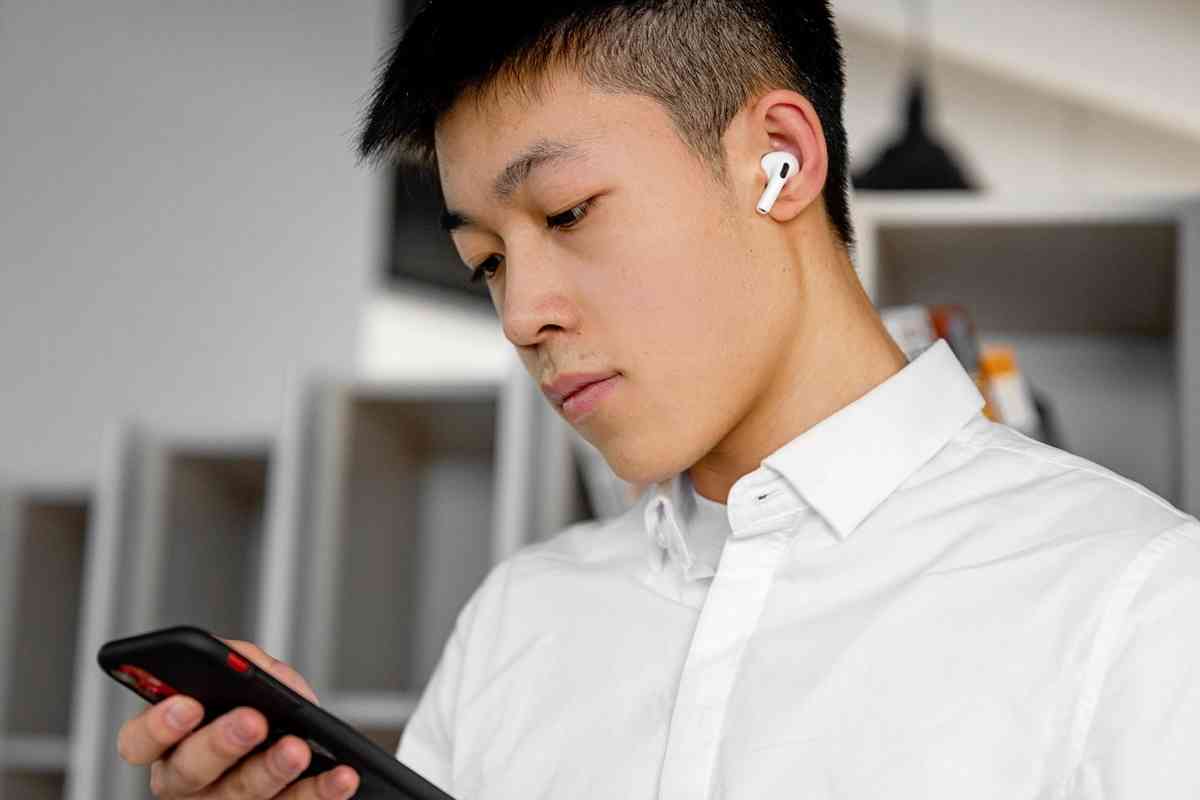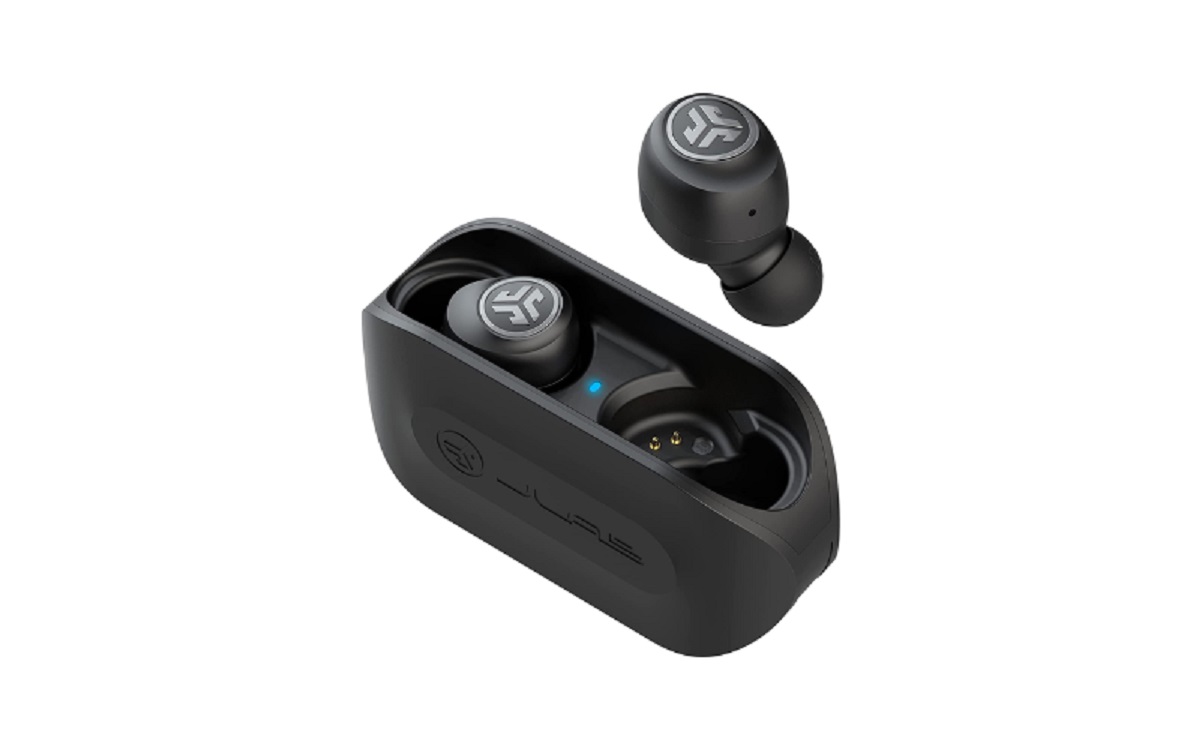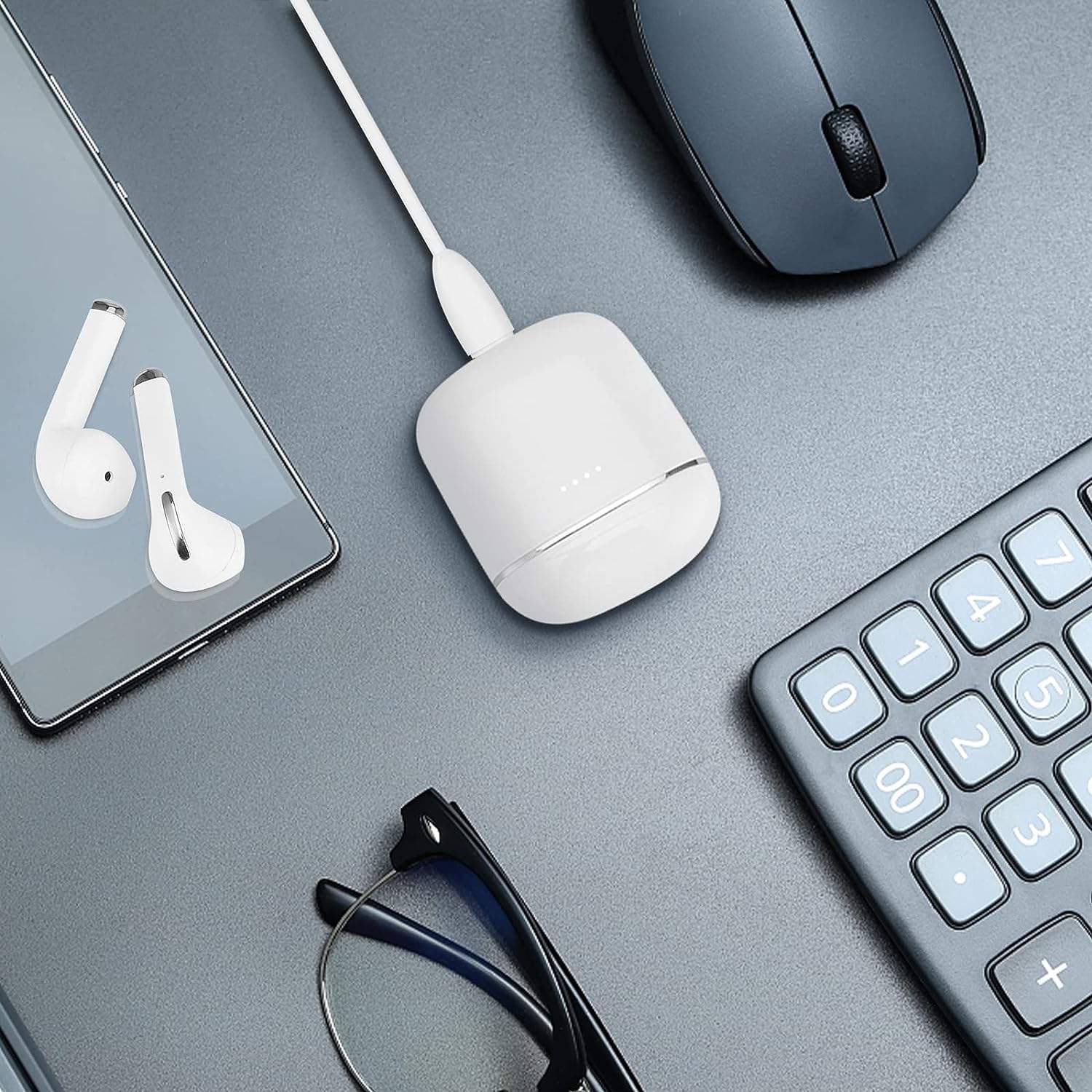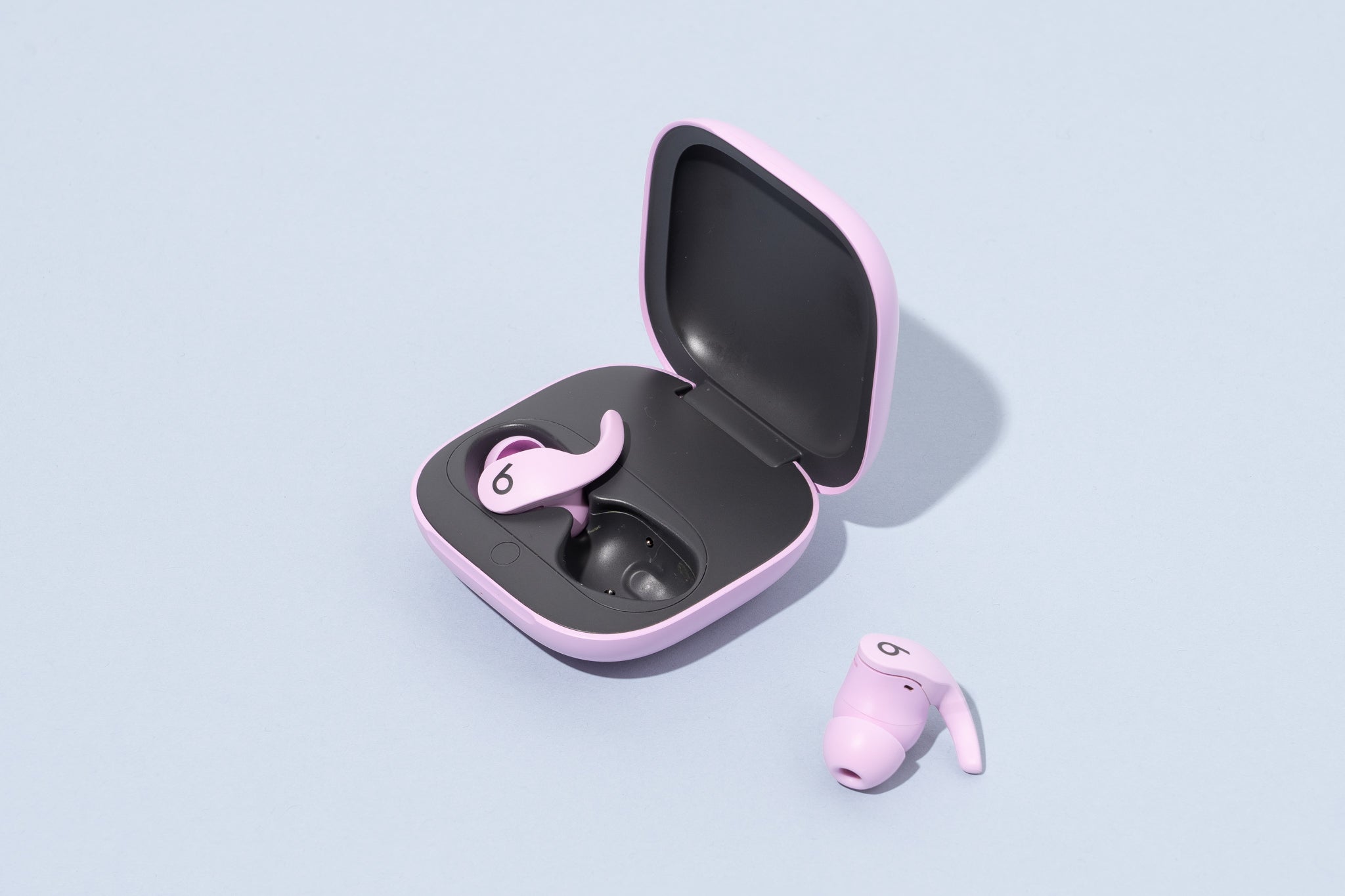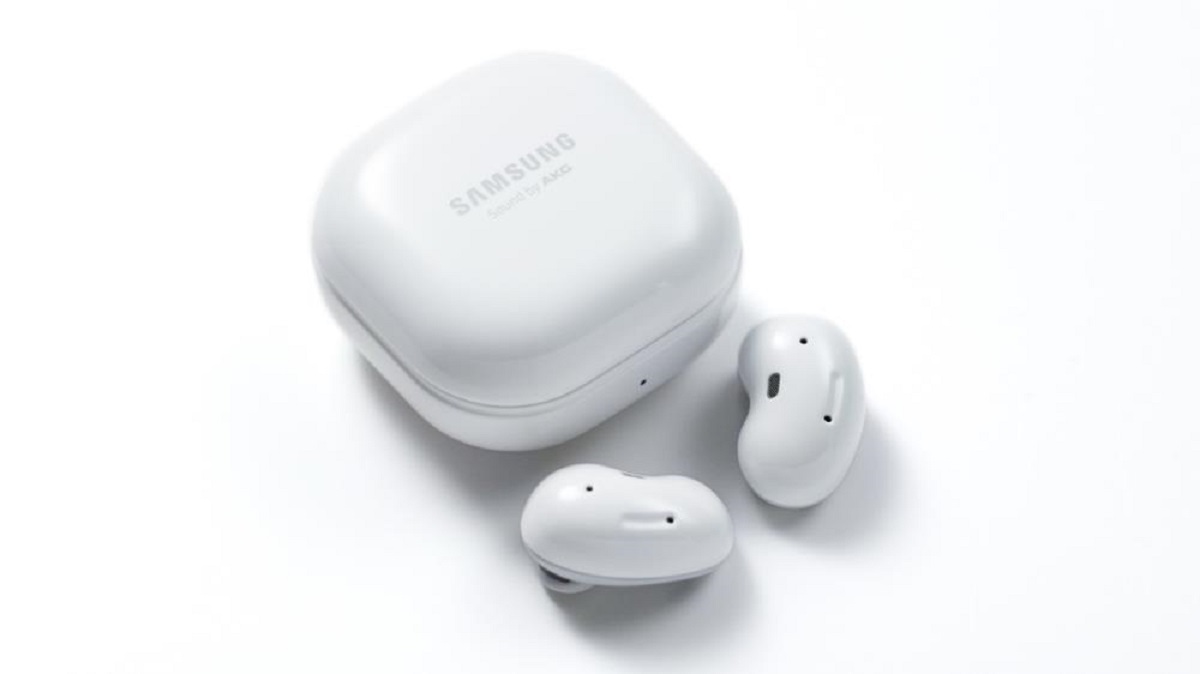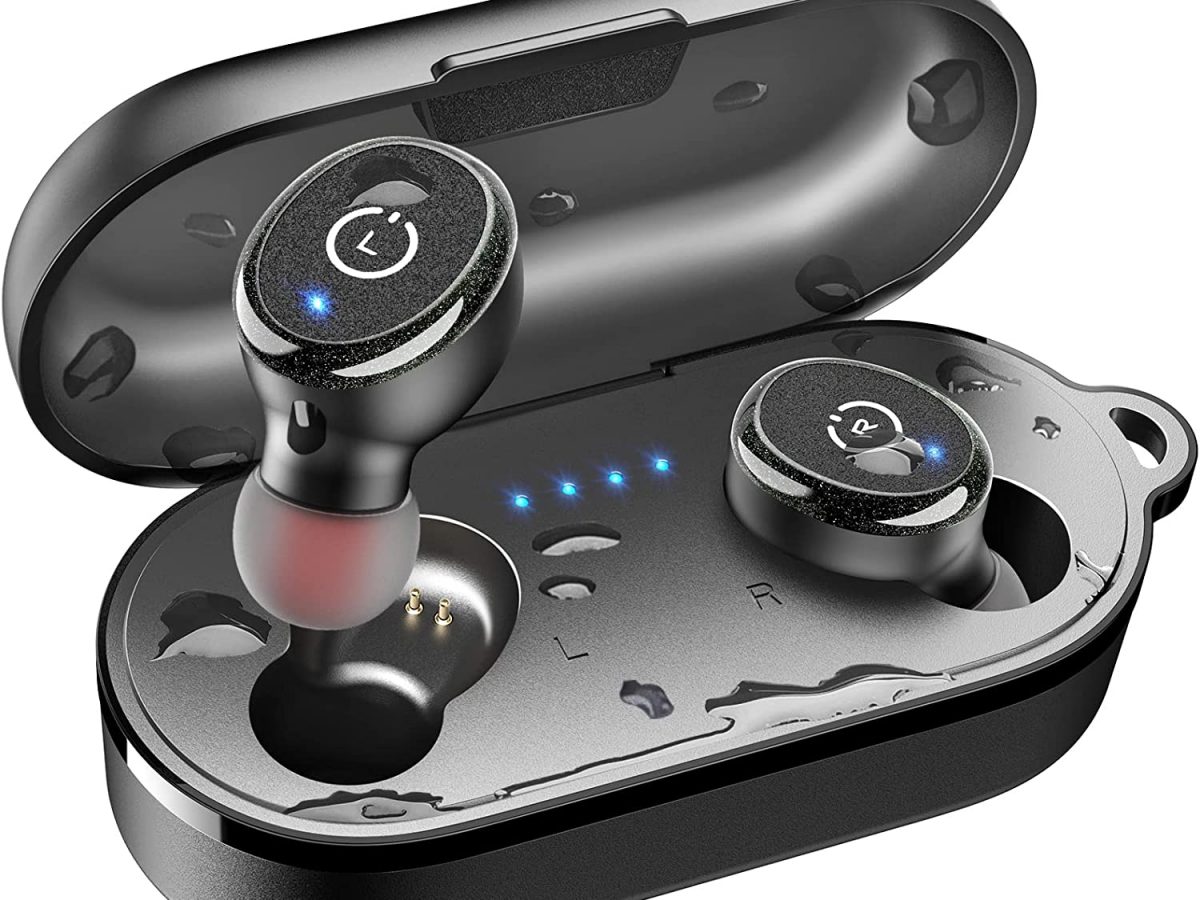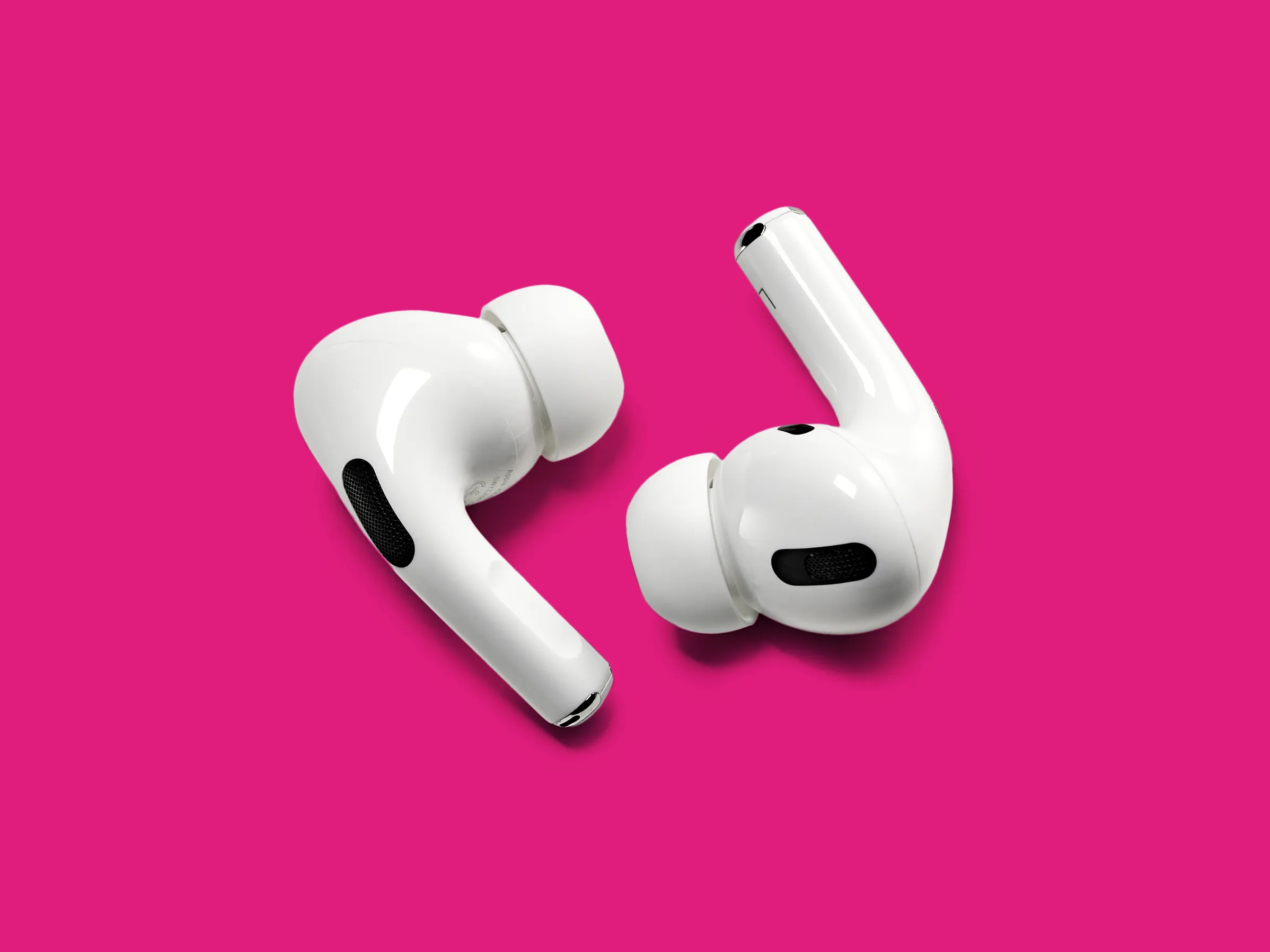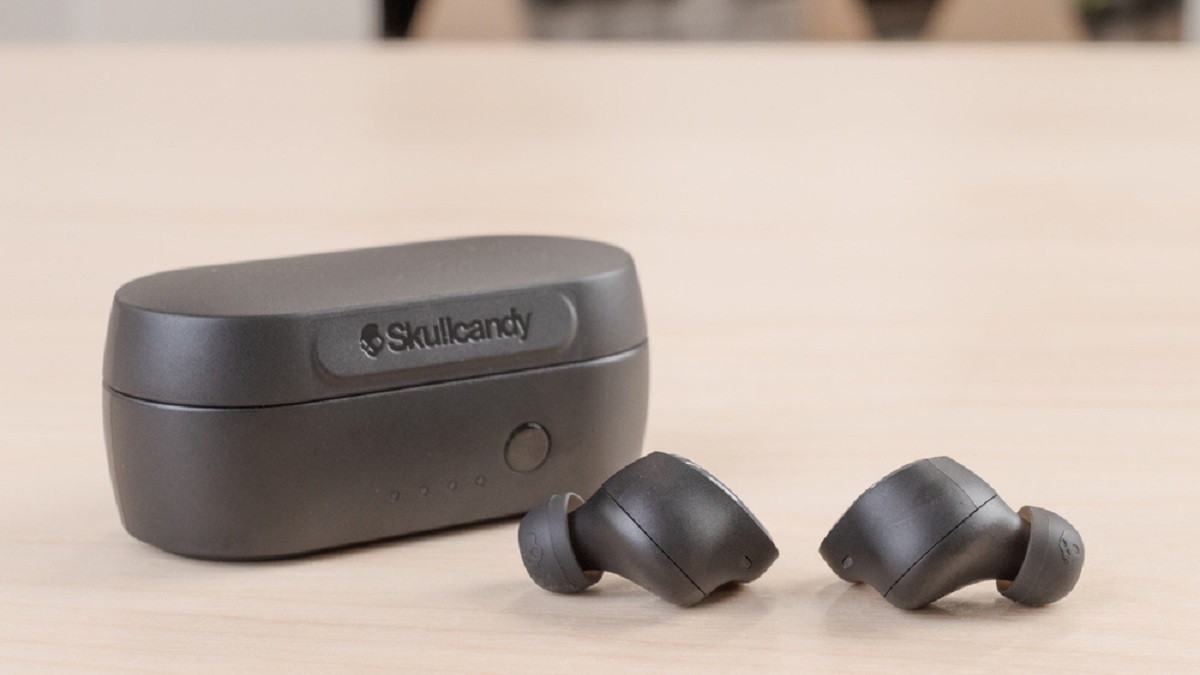Introduction
Welcome to the digital age, where wireless technology has become an integral part of our everyday lives. One of the most popular wireless gadgets are earbuds, allowing us to enjoy music, podcasts, and phone calls without the hassle of tangled wires. However, like any technological device, they may sometimes encounter issues, such as not connecting properly. In this article, we will explore the common reasons why your wireless earbuds may not be connecting and provide troubleshooting steps to help you resolve the issue.
Wireless earbuds rely on Bluetooth technology to establish a connection with your device. This technology allows smooth and uninterrupted audio transmission between your earbuds and device. However, there are various factors that can disrupt this connection and prevent your earbuds from pairing or staying connected.
Whether you have recently purchased new earbuds or have been using them for a while, encountering connectivity issues can be frustrating. The good news is that there are steps you can take to troubleshoot and resolve these problems. By following a few simple techniques, you can ensure that your wireless earbuds are connecting seamlessly and providing you with an immersive audio experience.
Common reasons for wireless earbuds not connecting
While there can be various reasons why your wireless earbuds are not connecting, a few common culprits are worth exploring. Understanding these reasons can help you pinpoint the cause of the issue and implement the appropriate troubleshooting steps. Here are the most frequent causes for earbud connectivity problems:
- Bluetooth settings: Often, the primary reason for connectivity issues is an error or misconfiguration in your device’s Bluetooth settings. It’s crucial to ensure that your Bluetooth is turned on, discoverable, and properly paired with your earbuds.
- Low battery: If your earbuds have a low battery, they may struggle to establish or maintain a connection. Make sure to charge them fully and check the battery level indicator to rule out this possibility.
- Device and earbud compatibility: Not all devices and earbuds are compatible with each other. Verify that your earbuds are compatible with your device and meet the necessary Bluetooth specifications.
- Device or earbud software issues: Outdated software or firmware can cause connectivity problems. It’s essential to keep both your device’s operating system and your earbuds’ firmware up to date to ensure optimal performance.
- Interference or range limitations: Wireless signals can be impacted by obstacles, such as walls or other electronic devices, causing signal interference or limiting the range. Moving closer to your device or eliminating potential sources of interference can improve connectivity.
- Temporary glitch: Occasionally, connectivity issues may stem from a temporary glitch or software hiccup. Restarting your earbuds and device can sometimes resolve such problems.
- Multiple connected devices: If you have other devices nearby that are connected to your earbuds, such as another phone or laptop, it can interfere with the connection to your desired device. Disconnecting or turning off other connected devices may help establish a connection.
By identifying these common reasons behind earbud connectivity issues, you can take the necessary steps to overcome them. In the following sections, we will discuss troubleshooting techniques that can help you resolve these problems and regain a seamless connection between your wireless earbuds and device.
Troubleshooting steps
When faced with wireless earbud connectivity issues, it’s essential to troubleshoot the problem to restore a seamless connection. Here are some troubleshooting steps you can follow:
- Check Bluetooth settings: Start by ensuring that Bluetooth is enabled on your device and that it is discoverable. Verify that your earbuds are in pairing mode and follow the instructions in the user manual to connect them to your device.
- Ensure earbuds are fully charged: Low battery levels can hinder your earbuds from connecting. Connect them to a power source and allow them to charge fully before attempting to establish a connection again.
- Restart earbuds and device: Sometimes, a simple restart can work wonders. Power off your earbuds and device, then turn them back on and attempt to connect again.
- Reset earbuds to factory settings: If all else fails, you can try resetting your earbuds to their factory settings. Refer to the user manual for instructions on how to perform a reset, as the process may vary depending on the model of your earbuds.
- Update firmware or software: Outdated software or firmware can cause compatibility issues. Check for updates for both your device’s operating system and your earbuds’ firmware. Installing the latest updates can potentially resolve connectivity problems.
- Check for interference or range issues: Make sure there are no obstacles or electronic devices interfering with the signal between your earbuds and device. Move closer to your device or eliminate potential sources of interference to improve connectivity.
- Try connecting to a different device: If you have access to another device, try connecting your earbuds to it. This can help determine if the connectivity issue lies with your earbuds or your current device. If they connect successfully to the alternative device, the problem may be with your original device.
By following these troubleshooting steps, you can increase the chances of resolving wireless earbud connectivity issues. However, if you still encounter problems, it may be worth reaching out to the manufacturer’s customer support for further assistance.
Check Bluetooth settings
One of the first steps to take when troubleshooting wireless earbud connectivity issues is to check and adjust your Bluetooth settings. Your device’s Bluetooth settings play a crucial role in establishing a stable connection with your earbuds. Here are some important points to consider:
- Ensure Bluetooth is turned on: Double-check that your device’s Bluetooth feature is enabled. Look for the Bluetooth icon in your device’s settings or notification panel and make sure it’s turned on.
- Make your device discoverable: Most earbuds require your device to be discoverable before they can establish a connection. In your device’s Bluetooth settings, enable the “Discoverable” or “Visible” option to allow your earbuds to detect and connect to your device.
- Pair your earbuds correctly: To ensure a successful connection, follow the specific pairing instructions provided by your earbuds’ manufacturer. This may involve holding down specific buttons or entering pairing codes. Refer to the user manual or manufacturer’s website for detailed instructions.
- Remove previous pairings: If you had previously paired your earbuds with another device, it’s possible that they are still trying to connect to that device instead of the current one. In your device’s Bluetooth settings, locate the previous pairing and select “Forget” or “Unpair” to remove it.
- Restart Bluetooth and device: Sometimes, Bluetooth-related issues can be resolved by simply restarting the Bluetooth feature on your device. Turn off Bluetooth, wait a few seconds, and then turn it back on. Additionally, restart your device to clear any temporary glitches that may be causing connectivity problems.
Checking and adjusting your Bluetooth settings can often resolve wireless earbud connectivity issues. If the problem persists, try the next troubleshooting steps to troubleshoot further.
Ensure earbuds are fully charged
One of the most common reasons why wireless earbuds may have trouble connecting is due to low battery levels. Before attempting to establish a connection, it is crucial to ensure that your earbuds are fully charged. Here are some important points to consider:
- Check the battery indicator: Most wireless earbuds come with a battery level indicator, either built into the earbuds themselves or through a dedicated app. Before attempting to connect, check the battery level indicator to see if your earbuds have enough charge.
- Charge your earbuds fully: If the battery level is low, connect your earbuds to a power source using the included charging cable or charging case. It is recommended to charge them fully to ensure optimal performance and to rule out low battery as the cause of connectivity issues.
- Ensure proper charging connection: Make sure that the charging cable is securely connected to both the charging port on your earbuds and the power source. Loose connections can result in incomplete charging, which may still cause connectivity problems.
- Allow sufficient charging time: Different earbud models have varying charging times. Consult the user manual or manufacturer’s instructions to determine the approximate charging time needed for your earbuds. Avoid prematurely disconnecting the charging cable before the earbuds have reached a full charge.
- Verify charging case functionality: If your earbuds come with a charging case, check that the case is functioning properly. Ensure that it is holding a charge and delivering power to your earbuds effectively. If you suspect issues with the charging case, contact the manufacturer for further assistance.
By ensuring that your wireless earbuds are fully charged, you eliminate low battery as a potential cause for connectivity issues. If the problem persists even with a full charge, proceed to the next troubleshooting steps.
Restart earbuds and device
When troubleshooting connectivity issues with your wireless earbuds, a simple restart of both your earbuds and the device you’re trying to connect them to can often resolve the problem. Here’s how you can restart them:
- Restart earbuds: Turn off your wireless earbuds by pressing and holding the power button until the indicator light turns off. After a few seconds, turn them back on by pressing the power button again. This process helps clear any temporary glitches that may be affecting the connection.
- Restart device: Navigate to the settings of your device and find the option to restart or reboot. Select this option, and your device will power down and restart. This can help resolve any software issues that may be interfering with the earbud connection.
- Close and reopen relevant apps: If you’re using specific apps for audio playback or earbud control, such as music streaming apps or companion apps for your earbuds, close them completely and then reopen them after the restart. Sometimes, these apps can experience glitches that affect the connection stability.
- Re-establish the Bluetooth connection: After restarting both your earbuds and device, go to the Bluetooth settings on your device and make sure your earbuds are listed as available devices to connect. Re-establish the connection following the manufacturer’s instructions for your earbuds.
- Try different pairing methods: Some earbuds have multiple pairing methods, such as automatic pairing when taken out of the charging case or manual pairing through physical button combinations. If one method doesn’t work, try the alternate method to see if it helps establish the connection.
Restarting your earbuds and device can help clear out any temporary issues that may be hindering the connection. If you successfully establish a connection after the restart, the troubleshooting process is complete. However, if the problem persists, you may need to explore further troubleshooting steps.
Reset earbuds to factory settings
If you’ve tried various troubleshooting methods and your wireless earbuds are still not connecting, it may be necessary to reset them to their factory settings. Resetting the earbuds can help resolve any software or configuration issues that might be causing the connectivity problem. Here’s how you can reset your earbuds:
- Refer to the user manual: Find the user manual or instruction guide that came with your earbuds. Look for the section that provides details on how to reset the earbuds to factory settings. The exact method may vary depending on the make and model of your earbuds.
- Follow the reset procedure: Typically, the procedure involves pressing specific buttons or combinations of buttons on the earbuds. Make sure to follow the instructions carefully to perform the reset. Be aware that this process will erase any saved settings or configurations on the earbuds.
- Allow time for the reset: After performing the reset, give your earbuds a few moments to complete the process. The indicator lights or beeps on the earbuds may indicate that the reset is in progress. Once the reset is complete, the earbuds will revert to their original factory settings.
- Reconnect the earbuds: After the reset, you will need to re-establish the Bluetooth connection between the earbuds and your device. Follow the pairing instructions provided by the manufacturer to connect the earbuds to your device.
- Test the connectivity: Once the earbuds are reset and reconnected, test the connectivity by playing audio or making a phone call. Verify that the earbuds are functioning properly and maintaining a stable connection with your device.
Resetting your earbuds to factory settings can often resolve complex software or configuration issues that may be preventing connectivity. If the problem persists even after the reset, it’s recommended to reach out to the manufacturer’s support for further assistance.
Update firmware or software
Outdated firmware or software can sometimes cause connectivity issues with wireless earbuds. Manufacturers regularly release updates to improve performance, enhance compatibility, and fix bugs. Updating the firmware or software of your earbuds and the device you’re connecting them to can potentially resolve connectivity problems. Here’s how you can update them:
- Check for updates: Visit the manufacturer’s website or the app corresponding to your earbuds to check for available firmware or software updates. Look for the “Support” or “Downloads” section to find the latest updates for your specific model. Similarly, ensure that your device’s operating system is up to date.
- Download and install updates: Follow the instructions provided by the manufacturer to download and install the updates for your earbuds. For certain models, the updates may be delivered via the companion app, while others require a direct firmware update through a computer. Follow the outlined steps carefully to successfully update the firmware or software.
- Allow sufficient installation time: Firmware or software updates may take varying amounts of time to install, depending on the size and complexity of the update. Be patient and avoid interrupting the installation process to ensure that the update is applied correctly. Follow any on-screen prompts or instructions specific to your earbuds or device.
- Restart and reconnect: After the updates are installed, restart both your earbuds and the device you’re connecting them to. This helps ensure that the new firmware or software changes are fully implemented. Re-establish the Bluetooth connection between the earbuds and your device and test the connectivity.
- Regularly check for updates: Updating firmware or software is an ongoing process. It’s important to periodically check for new updates and install them as they become available. By staying up to date, you can benefit from the latest features and improvements, as well as potentially resolve connectivity issues.
By keeping both your earbuds and the device’s firmware or software up to date, you can increase the chances of resolving connectivity issues. However, if the problem persists, proceed to the next troubleshooting steps.
Check for interference or range issues
Wireless earbuds rely on Bluetooth technology to establish a connection with your device. However, Bluetooth signals can be affected by various factors, such as obstacles or other electronic devices, leading to connectivity issues. Here are some steps you can take to check for interference or range issues:
- Move closer to your device: Bluetooth signals have a limited range. To ensure a stronger and more stable connection, move closer to your device, reducing the distance between your earbuds and the device they are paired with.
- Remove potential sources of interference: Electronic devices, such as routers, cordless phones, or other Bluetooth devices, can interfere with the signal. Try moving away from these devices or turning them off to reduce the chances of interference.
- Eliminate physical obstacles: Walls, furniture, and other physical objects can obstruct Bluetooth signals. Check if there are any obstacles between your earbuds and the device, and try to position yourself in a way that minimizes interference.
- Change the position of your device: The placement of your device can impact the strength of the Bluetooth signal. Try positioning your device in a different location or orientation to see if it improves the connectivity with your earbuds.
- Avoid crowded signal environments: In densely populated areas or places with many active Bluetooth devices, signal congestion can occur. This congestion can impact the performance and range of your earbuds. Consider using your earbuds in less crowded settings or at times when interference is minimal.
By checking for interference or range issues and making necessary adjustments, you can improve the connectivity between your wireless earbuds and your device. If the problem still persists, proceed to the next troubleshooting steps.
Try connecting to a different device
If you’re still experiencing connectivity issues with your wireless earbuds, it’s worth attempting to connect them to a different device. This step can help determine if the problem lies with your earbuds or with the original device you were trying to connect them to. Here’s what you can do:
- Choose an alternative device: Look for another device, such as a smartphone, tablet, or computer, that supports Bluetooth connectivity. It’s best to choose a device that you know is functioning properly and has a stable Bluetooth connection.
- Put your earbuds in pairing mode: Refer to the user manual or manufacturer’s instructions for your earbuds to enter pairing mode. This step ensures that your earbuds are ready to connect to the new device.
- Access the Bluetooth settings: On the alternative device, access its Bluetooth settings and look for your earbuds in the list of available devices. Select your earbuds to initiate the pairing process.
- Establish the connection: Follow the prompts on the device’s screen to connect your earbuds to the new device. Once connected, test the audio playback or make a call to confirm that the earbuds are working properly with this device.
- Observe the connectivity: Pay attention to the stability and quality of the connection with the alternative device. If the earbuds connect successfully and maintain a stable connection, it suggests that the issue may be with the original device rather than the earbuds.
By attempting to connect your wireless earbuds to a different device, you can gather valuable information about the source of the connectivity problem. If the earbuds work well with the alternative device, there may be compatibility or configuration issues with the original device that require further troubleshooting or support from the device manufacturer.
Compatibility issues
Compatibility plays a crucial role in establishing a successful connection between wireless earbuds and devices. Not all earbuds are compatible with every device, and vice versa. Here are some aspects to consider when troubleshooting compatibility issues:
- Check Bluetooth version: Different Bluetooth versions (e.g., Bluetooth 4.0, 5.0, etc.) offer varying levels of compatibility and features. Ensure that your earbuds and the device you’re trying to connect to support a compatible Bluetooth version.
- Verify device specifications: Review the specifications of your device and ensure that it supports the necessary Bluetooth profiles required by your earbuds. Some earbuds may require specific profiles, such as Advanced Audio Distribution Profile (A2DP) or Hands-Free Profile (HFP), to function correctly.
- Check compatibility with multiple devices: Some earbuds are designed to work seamlessly across various devices, while others may have limitations. Verify that your earbuds are compatible with the specific devices you intend to connect them to, such as smartphones, tablets, or computers.
- Research device-specific compatibility: Certain devices may have unique compatibility requirements or limitations. Look for any specific guidelines or compatibility recommendations provided by the device manufacturer to ensure seamless connectivity.
- Consider firmware updates: Manufacturers often release firmware updates to enhance compatibility between their earbuds and various devices. Check for any available firmware updates for your earbuds and install them to improve compatibility.
In some cases, compatibility issues may be unavoidable due to hardware or software limitations. If you find that your earbuds and device are not compatible, you may need to consider using alternative earbuds or upgrading your device to ensure a seamless and satisfying audio experience.
Conclusion
Wireless earbuds provide a convenient and immersive audio experience, but connectivity issues can sometimes hinder their performance. In this article, we explored common reasons why wireless earbuds may not connect properly and provided troubleshooting steps to help resolve these issues.
We discussed the importance of checking Bluetooth settings, ensuring earbuds are fully charged, restarting the earbuds and device, resetting earbuds to factory settings, updating firmware or software, checking for interference or range issues, and trying to connect to a different device. By following these troubleshooting steps, you can increase the likelihood of resolving connectivity problems and enjoying seamless audio playback.
It’s worth noting that compatibility between earbuds and devices is another crucial aspect to consider. Ensuring that your earbuds and device are compatible in terms of Bluetooth versions, specifications, and device-specific requirements can help prevent connectivity issues in the first place.
If the troubleshooting steps outlined in this article do not resolve the connectivity problem, it is recommended to reach out to the manufacturer’s customer support for additional assistance.
Remember to stay up to date with firmware or software updates for your earbuds and devices, as these updates often include improvements and bug fixes that can enhance compatibility and resolve connectivity issues.
With patience and persistence, you can troubleshoot and overcome wireless earbud connectivity issues, allowing you to fully enjoy your favorite audio content wirelessly and uninterrupted.







